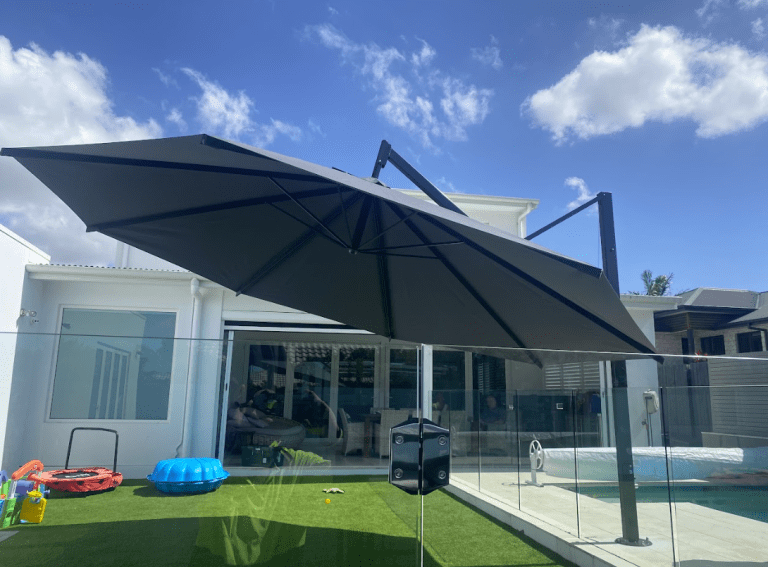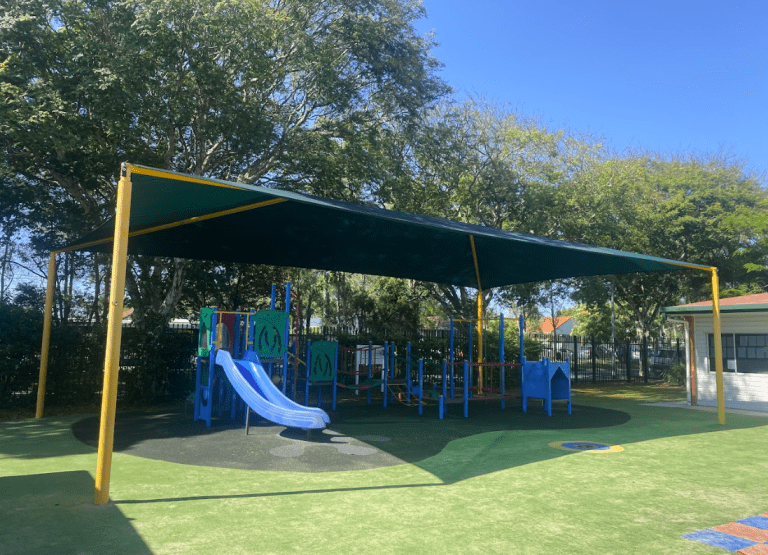Selecting furniture and other poolside features necessitates that you consider functionality, aesthetics, style, comfort, and longevity. The choice of chairs, the tables, the arrangement, and the little decorations can turn your pool area from just a swimming spot into your personal chill zone. The outdoor furniture and features you choose will fortify the poolside ambiance – whether you’re soaking up the sunshine, hosting an evening party, or seeking a tranquil corner for reflection. So how do you start? Let this guide walk you through key elements that turn a basic pool area into a magnificent alfresco sanctuary. Nothing beats kicking back by the pool with the sun shining down, right? But sometimes, you need a little shade to cool off. Those nifty pool umbrellas are lifesavers, especially if you’re chilling in sunbaked spots like Brisbane. They’re like your own sun blockers and add a nice touch to your pool’s look. When you’re out shopping for pool umbrellas in Brisbane, there are certain considerations. First, think about size. It should be big enough to hide from the sun but not so huge that it takes over. Next, go for materials that can handle a bit of beating in the weather. And style? Pick something that makes your poolside look even cooler. And it’s not all about umbrellas. You could go for a fancy pergola or some canopies or even plant a few trees around for a natural vibe. Each adds its own twist, from a classy pergola setup to the relaxed, leafy feel of a mini-tree haven. The best part of your pool area? Where you lounge. That’s where you’ll be chilling, soaking up some sun, or maybe just taking a quick nap. You want something comfy but tough enough to handle the outdoors, and it’s got to scream ‘you.’ Check out loungers, daybeds, hanging chairs, and even sectional sofas. Focus on materials that last, and don’t forget cushions and covers—they’re not just comfy; they’re a chance to show off your style. And don’t simply plop them down anywhere. Set up a cozy corner, a sunbathing spot, or a secret hideaway to make it totally yours. Why stick to indoor meals when you’ve got this sweet poolside spot? Whether it’s a casual BBQ or a fancy outdoor dinner, the right table and chairs can make every meal feel like a special event. Choose a set that fits your space and can handle your crew. You need something sturdy, such as teak, metal, or hey, how about synthetic rattan? In an exclusive survey with 627 respondents, 40.67% (that’s 255 people) said that all-weather or resin wicker, which is just a fancy name for synthetic rattan, is their go-to for outdoor furniture. Rattan is not just tough; it also lasts way longer than the stuff made from vinyl or plastic. Plus, these materials come in a bunch of styles. Whether you’re all about keeping it casual or you want to dial up the chic factor, there’s something for everyone. And why not add an outdoor rug for cozy feels or string lights for that magical evening vibe? If you’re into cooking, consider an outdoor kitchen or a grill. Good lighting can turn your poolside into a whole other world when the sun goes down. It’s about seeing where you’re going and setting the mood. Mix up different types of lights. Underwater lights give your pool that starry-night look, path lights keep things safe, and accent lights? They highlight the best parts of your pool. And string lights or lanterns—perfect for a touch of fairy-tale magic. Consider LED lights; they last forever and don’t consume much power. With smart lighting, you can change up the vibe right from your phone. Accessories can transform your poolside area from basic to breathtaking. Outdoor rugs, for instance, define spaces and add a touch of warmth and texture. Choose materials that are durable and easy to clean, ensuring they stand up to the outdoor elements. Planters and greenery also play a crucial role. They bring life and color to your pool area, creating a natural, serene environment. Consider low-maintenance plants that thrive in your climate, adding both beauty and a sense of privacy. Lastly, don’t overlook the power of outdoor art. Weather-resistant sculptures or wall art can infuse personality and interest into your poolside space, reflecting your unique style and taste. Okay, so you love your pool looking all stylish and inviting, but don’t forget about safety—because that’s super important. You know how pool areas can get slippery? That’s where non-slip surfaces come in. Pick materials that keep you on your feet, even when things get wet. They should feel nice to walk on because who likes rough surfaces under their toes? Now, onto pool fencing. You want a fence that does its job—keeping the gang safe—but also looks like it belongs there. So look for options that tick both boxes: safety and style. So if you’re in the area, pool fences Las Vegas is a must-have for peace of mind and style, keeping the pool secure without cramping the vibe. And don’t forget about pool covers. More than keeping leaves and bugs out, they’re a big deal for safety, especially if you’ve got kids or furry friends running around. Automated covers? Even better. They’re like having a safety guard that keeps your pool clean and a breeze to use. Conclusion Spicing up your poolside is about making it feel part of you. Each piece adds to your little slice of paradise, from choosing cool umbrellas to lighting up the night. So go on, get creative, and make your poolside the ultimate hangout spot for your outdoor events.














